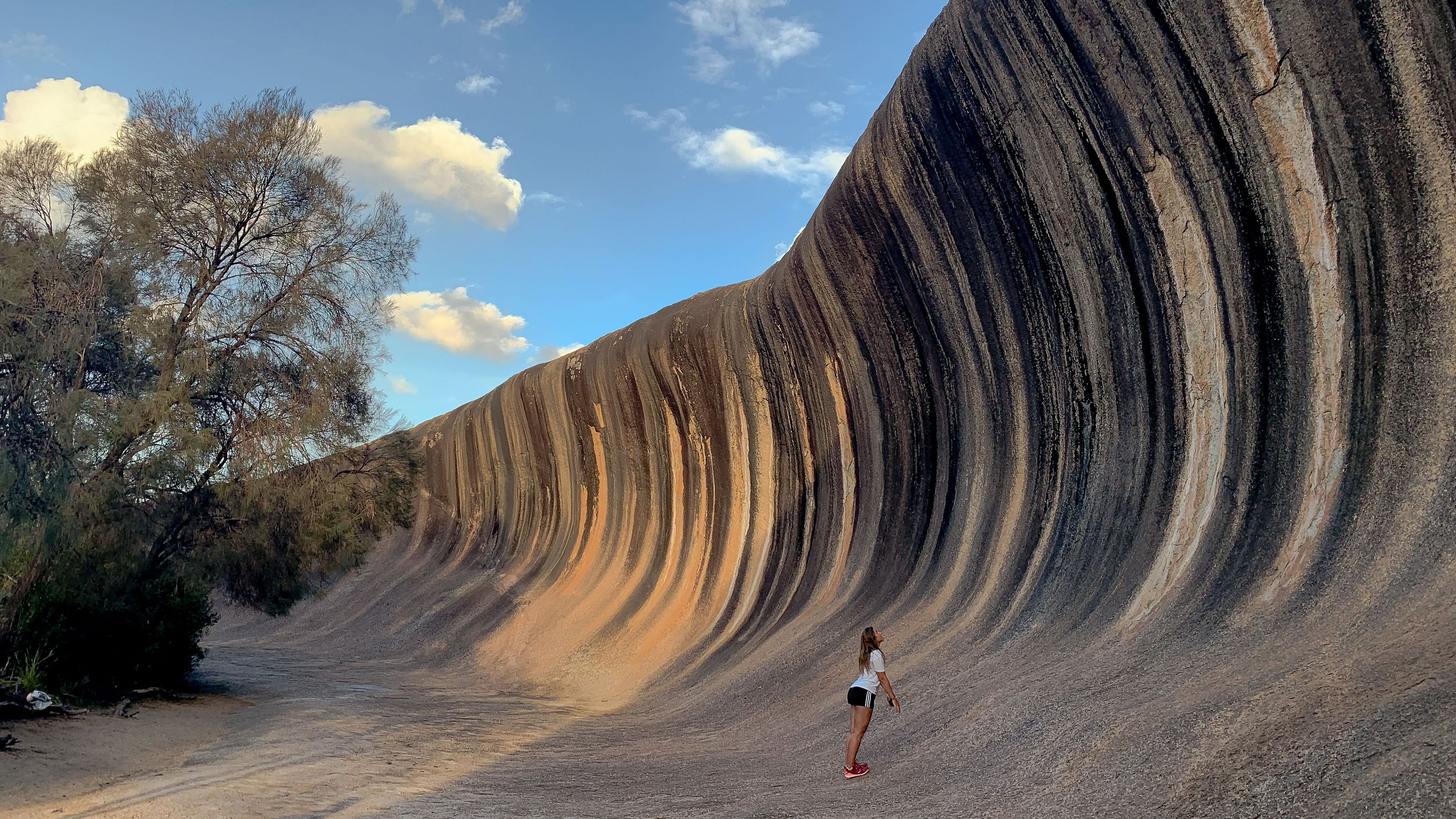
If one travels our wondrous planet only for the clichéd hot spots, they stand to miss much of the unique and the individual that characterises our world. As we journey into the New Year, here are three places from where you’re likely to return invigorated, with a new way of seeing, with more than brimming-over shopping bags, and with perhaps that sometimes-elusive commodity — a traveller’s story.
Wave Review, Hyden, Perth
Situated on the wheat belt, the town of Hyden which lies 350 km from Perth Australia, sits cheek-by-jowl with ancient granite rock formations, salt lakes and the colossal Wave Rock. This stupendous formation at 15 m high and 110 m long, resembles a breaking wave. The illusion is further enhanced by years of water stains running down its face. Too attractive for its own good, travellers are instantly drawn to taking photos while they pretend to be surfing the rock. But get out of yourself for a minute and you’ll notice a whole ecosystem that thrives on the rock. Lichen, moss, algae, and tiny cyanobacteria create patterns in grey, green, orange and black. When the rains arrive, the rock is bejewelled with rock pools, where hundreds of tiny aquatic invertebrates swim. Climb to the top of the rock and you’ll be treated to sweeping views of Salmon Gums, and rough-barked York Gum trees, all set in a vast green scape.
Around 16 km from Wave Rock, Hippo’s Yawn is a form sculpted by erosion to represent a cavernous yawning mouth. Nearby, Mulka’s Cave is a key aboriginal rock art sight, with over 450 stencils and handprints adorning its walls. The abundance of artwork inside this cave, which has stood its ground for tens of thousands of years, indicates that the place was a significant site. The hand stencils suggest a signature left by those who had a claim to the area.
The soundtrack to these wilderness treks is squawking flocks of pink-and-grey galahs and yellow-and-black ring-necked parrots — known as twenty-eights because that’s what they sound like when they shriek. If you played a game, you’d discover hundreds of species of wildflowers around the rocky outcrops that punctuate clearly demarcated trails.
A fork in the road, Eberbach Abbey, Germany
A two-hour drive from Frankfurt is the thoughtfully renovated Eberbach monastery. The on-site church is a classic example of Romanesque architecture. The lack of ornamentation and the stark quality of the interiors, with their overarching ceilings that extend over 25 meters in height, points to the idea that nothing was permitted to distract the monk during his time of contemplation. What’s marvellous is that while the ancient buildings and gardens maintain the austerity of their original purpose and are remarkably preserved, they have been as progressively adapted to new requirements, functions and uses. For instance, the Eberbach Abbey was used as a filming location for almost all interior scenes in the Umberto Eco movie The Name of the Rose.
Continuing with the Cistercian tradition of winemaking that took root in about the 13th century, the abbey-owned vineyards, continue to flourish. I visit the abbey cellar and sample wines like the unique Steinberg Riesling. The former refectory, now repurposed as a restaurant, sees local chefs reinterpreting the monastic diet. The ancient monks cooked food that was regional and seasonal. Their kitchen and herb gardens provided them with food ingredients and healing plants, an arrangement from which a contemporary kitchen benefits even today. I begin with a Riesling soup, move on to a leafy salad with goat cheese, and tuck into the Vesper plate — a feast of dried meats, smoked fish and bread. The plate also has upon it, the local speciality — handkas cheese, a sour-milk round of cheese with a strong odour, exacerbated by the onions sprinkled liberally on top. In this simple and generous dish, I taste the spirit of the men who once lived here, who knew how to work hard and live sustainably on the land.
Past perfect, historic Williamsburg, Virginia
Enlighten and entertain me, is what I ask of museums. Colonial Williamsburg, in the state of Virginia, and a 45-minute drive from the capital city of Richmond, as the world’s largest US history museum, satisfies this request. On 300 acres of land lie roughly 90 original 18th-century buildings, some historic sites, and other trade shops, all bordered by gardens. The houses are meticulously furnished to give a precise sense of the life of the Williamsburg population in the 18th century. Costumed townsfolk and interpreters, launch into impassioned and illuminative speeches, illustrating the lives of the diverse 18th-century community, especially as the American Revolution unfolded, and a new nation was born. I also encounter costumed tradespeople demonstrating 18th-century crafts.
What lends authenticity to the experience, is that while character actors like Thomas Jefferson, launch into speeches for freedom, no aspect of the past is overlooked or overwritten. Attired interpreters examine even the more controversial aspects of history — like women’s rights, the rights of indigenous people and the idea of slavery, with all the zeal of dissertation students.